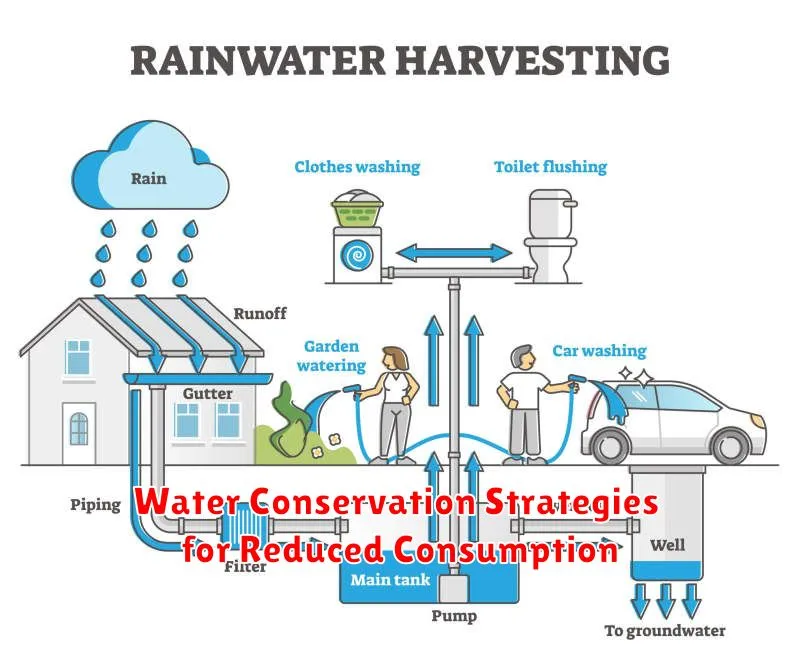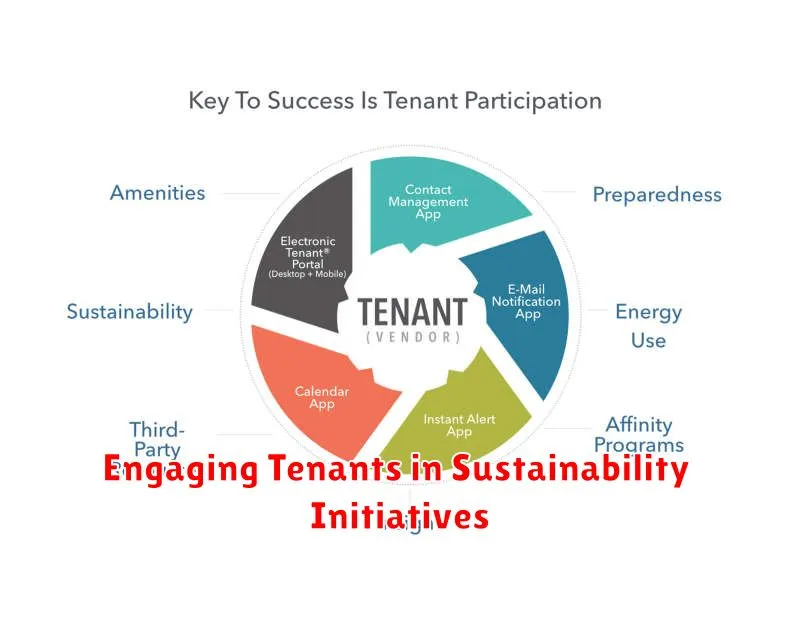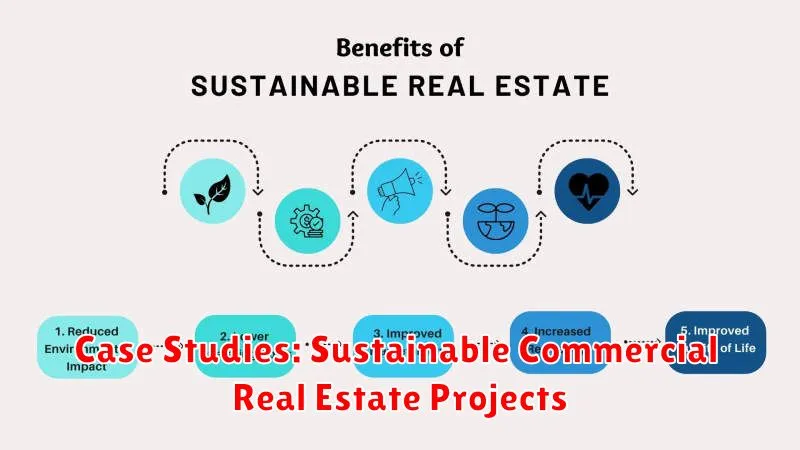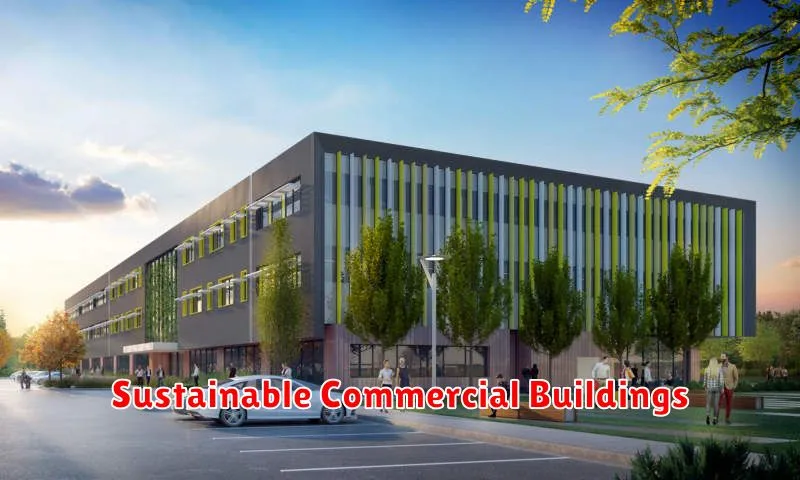In today’s world, sustainability is more than just a trend; it’s a necessity. The commercial real estate industry, a major contributor to environmental impact, is actively embracing sustainable practices to build a greener future. From energy efficiency and water conservation to responsible waste management and green building materials, sustainable practices are transforming the way we design, construct, and operate commercial buildings. This shift is not just about doing good; it’s about doing better, driving down costs, and attracting tenants who prioritize a sustainable lifestyle.
As awareness about climate change and resource scarcity grows, investors, developers, and tenants are increasingly demanding sustainable real estate solutions. This demand is pushing the industry to innovate and adopt sustainable practices that benefit both the environment and the bottom line. This article explores the growing importance of sustainable practices in the commercial real estate industry, delving into the key trends, challenges, and opportunities that are shaping the future of this dynamic sector.
Understanding the Importance of Sustainability
In today’s world, sustainability is no longer just a buzzword but a crucial factor in shaping the future of various industries. For the commercial real estate sector, embracing sustainability is not just a trend but a necessity. The concept of sustainability in commercial real estate goes beyond simply being environmentally friendly; it encompasses a comprehensive approach that prioritizes long-term value creation for stakeholders while minimizing environmental impact. By adopting sustainable practices, commercial real estate companies can reap numerous benefits, including reduced operating costs, enhanced tenant satisfaction, and improved brand reputation.
One of the primary reasons why sustainability is vital in commercial real estate is its direct impact on the environment. Buildings are significant contributors to greenhouse gas emissions, energy consumption, and waste generation. Implementing sustainable practices like energy-efficient design, renewable energy sources, and waste management systems can significantly reduce these negative impacts, making a positive contribution to environmental conservation. By taking these steps, commercial real estate developers and owners can demonstrate their commitment to responsible practices and contribute to a more sustainable future.
Sustainability is also deeply intertwined with financial considerations in the commercial real estate sector. By implementing energy-efficient technologies, reducing water consumption, and optimizing building operations, companies can significantly lower their operating costs. Sustainable buildings often boast lower utility bills, reduced maintenance expenses, and increased property values, creating a more resilient and financially viable investment. Additionally, the growing demand for sustainable spaces from tenants who prioritize environmentally conscious choices allows landlords to attract and retain valuable occupants.
The significance of sustainability extends beyond environmental and financial aspects. It also plays a crucial role in attracting and retaining top talent. As sustainability becomes an increasingly important factor for employees, companies that prioritize these practices are more likely to attract and retain skilled professionals. This is particularly important for commercial real estate companies that rely on attracting tenants and employees who value sustainability. By showcasing their commitment to responsible practices, companies can enhance their brand reputation and create a positive image that resonates with environmentally conscious stakeholders.
Energy Efficiency Measures for Commercial Buildings
Commercial buildings are significant consumers of energy, contributing a substantial portion to greenhouse gas emissions. Implementing energy efficiency measures is crucial for reducing environmental impact and saving on operational costs. Here are some key strategies:
1. Building Envelope Improvements: Enhancing the building envelope through insulation, glazing, and air sealing significantly reduces heat loss or gain. This minimizes the demand on HVAC systems, resulting in energy savings.
2. High-Performance HVAC Systems: Upgrading to efficient HVAC systems, such as variable-speed drives and heat recovery systems, can optimize temperature control and reduce energy consumption.
3. Lighting Upgrades: Utilizing energy-efficient lighting technologies like LED bulbs and occupancy sensors significantly lowers electricity consumption. Smart lighting controls further optimize energy usage based on real-time needs.
4. Water Conservation Measures: Implementing water-saving fixtures, low-flow faucets, and smart irrigation systems can reduce water consumption and associated energy use for heating and pumping.
5. Renewable Energy Integration: Incorporating renewable energy sources such as solar panels or wind turbines can significantly reduce reliance on fossil fuels and contribute to a cleaner energy profile.
6. Building Management Systems (BMS): Implementing BMS allows for centralized monitoring and control of building systems, enabling optimized energy usage and identifying potential inefficiencies.
7. Behavioral Change Initiatives: Encouraging occupants to adopt energy-saving habits through education and awareness campaigns can contribute to overall energy reduction.
By adopting these energy efficiency measures, commercial building owners and managers can significantly reduce their environmental impact, save on operational costs, and contribute to a more sustainable future.
Water Conservation Strategies for Reduced Consumption

In the realm of commercial real estate, embracing sustainable practices is no longer a choice, but a necessity. One crucial aspect of this shift is the implementation of water conservation strategies, aimed at reducing consumption and minimizing environmental impact. By adopting innovative approaches, commercial properties can significantly decrease their water footprint while maintaining operational efficiency.
Low-Flow Fixtures: Installing low-flow faucets, showerheads, and toilets can dramatically reduce water usage without compromising functionality. These fixtures are designed to use less water while delivering the same level of performance, resulting in substantial savings over time.
Smart Irrigation Systems: Utilizing smart irrigation systems that utilize sensors to monitor soil moisture and adjust watering schedules accordingly optimizes water usage. These systems eliminate overwatering, a common culprit of water waste, and ensure that plants receive the exact amount of water they need.
Water-Efficient Landscaping: Selecting native plants that thrive in the local climate and require minimal irrigation is a sustainable landscaping approach. Replacing thirsty lawns with drought-tolerant alternatives further minimizes water consumption.
Leak Detection and Repair: Promptly addressing leaks in plumbing systems is paramount. Even small leaks can waste significant amounts of water over time. Implementing regular leak detection and repair programs ensures that water usage remains under control.
Water Recycling and Reuse: Utilizing gray water systems, which capture and treat water from sinks, showers, and washing machines, for non-potable uses such as irrigation significantly reduces reliance on fresh water sources.
By implementing these water conservation strategies, commercial real estate properties can embrace sustainability, reduce operating costs, and contribute to a more environmentally responsible future. These practices not only benefit the planet but also enhance property value and attract tenants who prioritize sustainability.
Implementing Renewable Energy Sources
Incorporating renewable energy sources is a crucial step towards sustainability in commercial real estate. By harnessing clean and sustainable energy, businesses can reduce their environmental impact and contribute to a greener future.
There are various renewable energy options available, each with its own advantages and considerations. Solar energy, for instance, can be harnessed through photovoltaic panels that convert sunlight into electricity. This option is particularly suitable for buildings with ample roof space. Wind energy, another viable choice, uses wind turbines to generate electricity. This option is best suited for areas with consistent wind speeds.
Implementing renewable energy sources not only reduces carbon emissions but also offers financial benefits. Solar and wind energy systems can significantly lower energy bills in the long run, leading to substantial cost savings. Additionally, embracing sustainability enhances a building’s appeal to environmentally conscious tenants and investors, increasing its value and attracting a wider market.
Waste Management and Recycling Programs
Waste management and recycling programs are essential components of sustainable practices in commercial real estate. By implementing efficient and effective programs, businesses can minimize their environmental impact, reduce waste disposal costs, and promote a positive image.
A comprehensive waste management program should involve source reduction, recycling, composting, and responsible disposal. Source reduction emphasizes minimizing waste generation through practices like purchasing products with less packaging, using reusable materials, and implementing energy-efficient appliances. Recycling involves collecting and processing materials for reuse, such as paper, plastic, glass, and metals. Composting provides a sustainable way to manage organic waste by converting it into nutrient-rich compost. Responsible disposal ensures that hazardous materials are properly handled and disposed of according to regulations.
Beyond the environmental benefits, waste management programs can offer significant financial advantages for commercial real estate. Recycling can reduce landfill fees and generate revenue from the sale of recycled materials. Composting can provide a valuable resource for landscaping and gardening, further reducing costs. By implementing these practices, businesses can create a more sustainable and cost-effective operation.
To effectively implement waste management and recycling programs, it is crucial to educate employees and tenants about proper waste disposal practices. This can be achieved through signage, training sessions, and regular communication. Additionally, providing convenient recycling bins and composting facilities encourages participation and promotes a culture of sustainability.
Green Building Materials and Certifications

The adoption of green building materials is an essential component of sustainable commercial real estate practices. These materials are designed to minimize environmental impact throughout their life cycle, from extraction and manufacturing to use and disposal. They often feature recycled content, renewable resources, and low-emission processes, contributing to reduced energy consumption, lower greenhouse gas emissions, and improved indoor air quality.
In addition to material choices, obtaining green building certifications like LEED (Leadership in Energy and Environmental Design) and WELL (Well Building Standard) validates a building’s commitment to sustainability. These certifications assess various aspects, including energy efficiency, water conservation, material selection, and occupant health and well-being. Achieving these certifications can enhance a building’s market value, attract tenants seeking sustainable spaces, and demonstrate a commitment to environmental responsibility.
Some popular green building materials include:
- Bamboo: A rapidly renewable resource known for its strength and versatility.
- Recycled Content Materials: Including glass, metal, and plastic, reducing waste and promoting circularity.
- Bio-based Materials: Such as cork, hemp, and straw, offering natural insulation and low embodied energy.
- Low-VOC Paints and Finishes: Minimizing harmful emissions for improved indoor air quality.
By prioritizing green building materials and seeking certifications, commercial real estate developers can contribute to a more sustainable future while creating healthier and more efficient spaces for tenants.
Creating Healthy Indoor Environments
In the realm of commercial real estate, sustainability is no longer a trend but a necessity. As businesses strive to attract and retain top talent, create a positive work environment, and minimize their environmental impact, creating healthy indoor environments has become paramount.
By incorporating sustainable practices, commercial spaces can significantly enhance indoor air quality. High-performance ventilation systems, coupled with natural ventilation, can effectively remove pollutants and ensure a constant supply of fresh air. Green building materials, free of volatile organic compounds (VOCs), contribute to a healthier atmosphere. Additionally, biophilic design, integrating elements of nature into the workspace, has been proven to boost employee well-being and productivity.
Beyond air quality, thermal comfort is another crucial aspect of healthy indoor environments. Employing energy-efficient building technologies, such as high-performance insulation and smart thermostats, can optimize temperature control and minimize energy consumption. Natural lighting plays a vital role in reducing reliance on artificial light, promoting circadian rhythms, and improving employee mood. Ergonomic furniture and workspace design further enhance employee comfort and reduce the risk of musculoskeletal disorders.
Creating healthy indoor environments is not merely about improving employee well-being but also about attracting and retaining top talent. Companies that prioritize sustainability and employee health gain a competitive advantage by fostering a positive and productive work environment. This, in turn, leads to increased employee engagement, reduced absenteeism, and enhanced brand reputation.
Sustainable Transportation Options for Tenants
In the realm of commercial real estate, sustainability is no longer a mere aspiration but a critical aspect of responsible business practices. As the industry evolves, it’s essential to consider how buildings can facilitate eco-friendly transportation choices for tenants. Embracing sustainable transportation options not only minimizes environmental impact but also enhances tenant well-being and fosters a positive brand image.
One key approach is to promote active transportation, such as walking and cycling. This can be achieved by creating safe and accessible pedestrian and bike paths, offering secure bike storage facilities, and even partnering with local bike-sharing programs. By encouraging active transportation, landlords can contribute to a healthier lifestyle for tenants while reducing reliance on private vehicles.
Another effective strategy is to prioritize public transportation accessibility. This involves ensuring proximity to bus stops, train stations, or light rail lines. Providing convenient and frequent public transportation options encourages tenants to opt for car-free commutes, minimizing congestion and emissions.
Furthermore, carpooling initiatives can significantly reduce the number of individual vehicles on the road. Offering carpooling programs, designated parking spaces for carpoolers, and promoting ride-sharing services can foster collaboration among tenants and contribute to a more sustainable transportation ecosystem.
Beyond these traditional approaches, landlords can explore innovative options such as electric vehicle charging stations. Providing charging infrastructure on-site not only caters to environmentally conscious tenants but also aligns with the growing popularity of electric vehicles. Additionally, offering incentives for the use of electric vehicles, such as discounted parking rates, can further encourage adoption.
Ultimately, embracing sustainable transportation options is not only a responsible choice for the environment but also a strategic move for commercial real estate owners. By fostering a culture of sustainable mobility, landlords can attract and retain tenants who value environmental responsibility, enhance the well-being of their workforce, and contribute to a more sustainable future.
Engaging Tenants in Sustainability Initiatives

In the realm of commercial real estate, sustainability is no longer a mere trend; it’s a core value driving long-term success. Engaging tenants in sustainability initiatives is crucial to achieving this objective. Not only does it enhance the property’s environmental footprint, but it also fosters a sense of community and responsibility among tenants.
To effectively engage tenants, clear communication is paramount. Educate them about the benefits of sustainability, such as reduced energy costs and a healthier work environment. Highlight the property’s specific sustainability features, such as energy-efficient lighting, water conservation systems, and green cleaning practices. This transparency builds trust and encourages tenant buy-in.
Furthermore, empower tenants to contribute to sustainability efforts. Implement programs that incentivize energy conservation, such as offering rewards for reducing electricity consumption. Encourage recycling and waste reduction initiatives. Organize events and workshops that raise awareness about sustainable practices. These actions create a sense of ownership and encourage tenants to become active participants.
By fostering a culture of sustainability through collaboration and communication, you can create a win-win scenario for both tenants and property owners. Sustainable practices enhance the property’s value, attract environmentally conscious tenants, and build a positive reputation within the community. It’s not just about green buildings; it’s about creating a sustainable future together.
Measuring and Tracking Sustainability Performance
In the realm of commercial real estate, sustainability is no longer a mere aspiration; it’s becoming a defining characteristic of success. As investors and tenants prioritize eco-friendly practices, it’s essential to not only implement sustainable initiatives but also measure and track their impact. This data provides valuable insights into the effectiveness of these efforts and allows for continuous improvement.
Several key performance indicators (KPIs) can be used to measure sustainability performance. These include:
- Energy consumption: Tracking energy use per square foot can reveal areas for optimization, such as implementing energy-efficient lighting or HVAC systems.
- Water consumption: Monitoring water usage, particularly in areas like landscaping and restrooms, can identify opportunities for water conservation.
- Waste diversion: Measuring the percentage of waste diverted from landfills through recycling and composting programs showcases the effectiveness of waste management practices.
- Greenhouse gas emissions: Assessing carbon footprint allows for identifying sources of emissions and implementing strategies for reduction.
- Tenant satisfaction: Surveying tenants about their perception of the building’s sustainability features provides valuable feedback for improvement.
Tracking these KPIs over time provides a clear picture of the building’s sustainability journey. This data can be used to:
- Identify areas for improvement: Pinpoint specific aspects where sustainability efforts can be enhanced.
- Demonstrate progress: Showcase the positive impact of sustainability initiatives to stakeholders, including investors and tenants.
- Benchmark against industry standards: Compare performance against industry benchmarks to assess competitiveness and identify best practices.
- Inform decision-making: Provide valuable data for making informed decisions about future sustainability investments.
By actively measuring and tracking sustainability performance, commercial real estate developers and owners can not only reduce their environmental footprint but also attract tenants and investors who value sustainability. This data-driven approach fosters a culture of continuous improvement, leading to a more sustainable future for the industry.
Financial Benefits of Sustainable Practices
Sustainable practices in commercial real estate are no longer just a trend; they are becoming essential for long-term success. The financial benefits of adopting sustainable practices are undeniable, offering a compelling case for businesses to prioritize environmental responsibility. Let’s delve into some key areas where sustainability translates to financial gain.
Reduced Energy Costs: Implementing energy-efficient features like LED lighting, smart thermostats, and high-performance windows can significantly reduce energy consumption and lower utility bills. This translates to immediate cost savings and enhanced profitability.
Lower Water Consumption: Water conservation measures, such as installing low-flow fixtures and implementing smart irrigation systems, can lead to substantial water cost savings. This is particularly crucial in regions facing water scarcity, offering a competitive advantage.
Enhanced Asset Value: Sustainable buildings are increasingly sought after by tenants and investors, commanding higher rental rates and achieving greater asset value. Green certifications like LEED and WELL demonstrate commitment to sustainability, enhancing the marketability and investment potential of a property.
Improved Tenant Satisfaction: Sustainable practices create healthier and more comfortable work environments for tenants, fostering higher satisfaction levels and longer lease terms. This translates to stable revenue streams and reduced vacancy costs.
Access to Incentives and Rebates: Governments and organizations offer various incentives and rebates for businesses adopting sustainable practices. These financial incentives can further reduce implementation costs and accelerate ROI.
In conclusion, embracing sustainable practices in commercial real estate is not only environmentally responsible but also a financially sound decision. The tangible benefits of reduced energy consumption, lower water usage, enhanced asset value, improved tenant satisfaction, and access to incentives make sustainable practices a compelling investment for long-term success.
Government Incentives and Tax Benefits
Governments around the world are recognizing the importance of sustainable practices in commercial real estate and are offering a variety of incentives and tax benefits to encourage their adoption. These incentives can significantly reduce the cost of implementing sustainable features and make them more attractive to developers and investors.
One common incentive is tax breaks for building energy-efficient structures. These can come in the form of tax credits, deductions, or exemptions for meeting specific energy efficiency standards. For example, the U.S. government offers tax credits for installing solar panels and other renewable energy systems. Some cities also offer tax breaks for developers who use green building materials or implement water conservation measures.
In addition to tax breaks, governments may offer grants or subsidies to support sustainable projects. These can be used to cover the cost of energy audits, feasibility studies, or even the installation of sustainable features. For instance, some states provide grants for developers who install green roofs or implement stormwater management systems.
Another way governments can encourage sustainable practices is by providing preferential zoning or permitting for green buildings. By simplifying the permitting process or allowing for greater density in sustainable developments, governments can make it easier and more attractive for developers to build green.
Government incentives and tax benefits play a vital role in driving the adoption of sustainable practices in commercial real estate. By making sustainable features more affordable and attractive, they are helping to create a more environmentally friendly and economically viable built environment.
Case Studies: Sustainable Commercial Real Estate Projects

Sustainable practices are becoming increasingly crucial in the commercial real estate industry, and numerous projects exemplify the successful implementation of these principles.
The Bullitt Center in Seattle, Washington, stands as a beacon of sustainability. Designed to achieve net-zero energy consumption and a Living Building Challenge certification, this office building boasts a rainwater harvesting system, a green roof, and innovative ventilation strategies.
Another notable example is the Edge Olympic in Amsterdam, Netherlands. This office building features a dynamic facade that adjusts to optimize daylight and natural ventilation, reducing energy consumption and maximizing occupant comfort. The building incorporates solar panels, green walls, and a rainwater management system to further enhance its environmental performance.
In Singapore, the CapitaGreen skyscraper exemplifies sustainability through its unique design and energy-efficient features. The building’s bioclimatic design, incorporating a double-skin facade and a sky garden, helps reduce energy consumption by controlling solar heat gain and improving air quality. It also incorporates a rainwater harvesting system and a dedicated rooftop solar farm.
These case studies demonstrate the feasibility and benefits of sustainable practices in commercial real estate. They showcase innovative approaches to energy efficiency, water conservation, and waste reduction, proving that sustainable buildings can be economically viable and environmentally responsible.
Future Trends in Sustainable Commercial Real Estate
The commercial real estate industry is rapidly evolving, with sustainability taking center stage. As businesses and investors prioritize environmental responsibility, several trends are shaping the future of sustainable commercial real estate.
Net-Zero Buildings: The push towards carbon neutrality is driving the adoption of net-zero buildings, which produce as much energy as they consume. This is achieved through efficient building design, renewable energy sources, and energy storage systems.
Smart Building Technologies: Smart building technologies, including building management systems (BMS) and Internet of Things (IoT) devices, are becoming increasingly prevalent. These technologies optimize energy consumption, improve building efficiency, and enhance tenant comfort.
Sustainable Materials and Construction Practices: The use of sustainable materials, such as recycled content and locally sourced timber, is gaining momentum. Additionally, sustainable construction practices, like green building certifications (LEED, BREEAM), are becoming the industry standard.
Green Leasing: Green leases encourage tenants to adopt sustainable practices by incorporating energy efficiency measures and waste reduction initiatives into lease agreements. This fosters a collaborative approach to sustainability within buildings.
ESG Investing: Environmental, social, and governance (ESG) considerations are playing a crucial role in investment decisions. Investors are increasingly prioritizing sustainable projects and businesses, driving the demand for green buildings and sustainable real estate.
These trends are shaping the future of commercial real estate, leading to a more sustainable and responsible industry. By embracing these innovations, real estate developers and investors can create buildings that are environmentally friendly, economically viable, and socially responsible.

